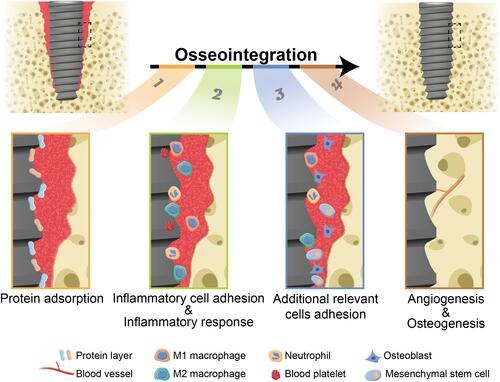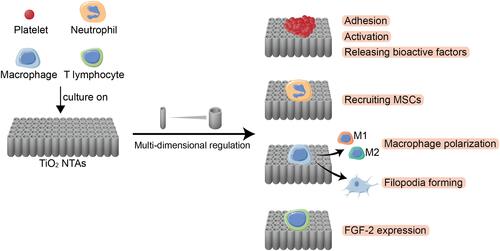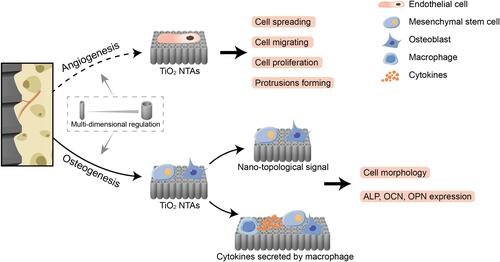Figures & data
Table 1 Adjust Anodization Parameters to Regulate TiO2 NTAs with Multi-Dimensional Structure, Impacting on the Biological Effect
Figure 1 Schematic illustration of the implant-bone osseointegration process. According to different pivotal biological processes, we define osseointegration into four stages: protein adsorption, inflammatory cell adhesion/inflammatory response, additional relevant cells adhesion, and angiogenesis/osteogenesis. The biological process in each stage has close relation with the titanium implant surface. It should be noted that although the stage “angiogenesis” is categorized as the last stage, it indeed runs through the entire osseointegration process.

Figure 2 Schematic illustration showing the inflammatory cell adhesion and inflammatory response on TiO2 NTAs, mainly includes biological behaviors of blood platelet, neutrophil, macrophage and T lymphocyte. TiO2 NTAs can manipulate these biological behaviors by multi-dimensional regulation including diameter, spacing, etc.

Figure 3 Schematic illustration showing the angiogenesis and osteogenesis on TiO2 NTAs. For osteogenesis, MSCs and osteoblasts cultured on TiO2 NTAs are manipulated by two aspects: nano-topological signal and cytokines secreted by macrophage, and show stretched cell morphology and promoted ALP, OCN, OPN expression. For angiogenesis, there is little research directly investigating the angiogenesis function of TiO2 NTAs in bone implants, but endothelial cells on TiO2 NTAs show high activity, suggesting the potential to promote angiogenesis in osseointegration. Angiogenesis and osteogenesis on TiO2 NTAs can also manipulate under its multi-dimensional regulation, such as diameter regulation and spacing regulation.

